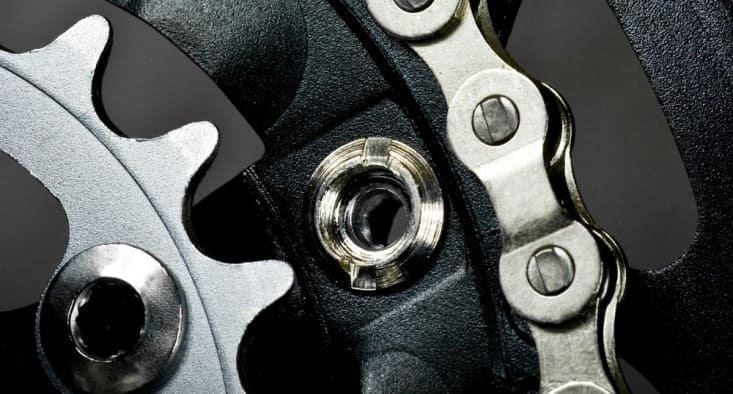Thousands of kinds of steel have been created for a wide variety of purposes. By and large, they can be divided into alloy and carbon steel. The difference between alloy steel and carbon steel can be described quite simply. If steel contains iron and carbon (plus a small amount of constant impurities: manganese, silicon, sulphur, phosphorus and some gases), it is called carbon steel. If in the process of carbon steel smelting, alloying additives (chromium, nickel, vanadium, etc – see below) are added to it to obtain special mechanical or physical properties, it is called alloy steel.
Alloy steel classification
Alloy steel can be low-alloy, medium-alloy and high-alloy. The first type contains up to 2.5% alloying additives and the second has no more than 10%. High-alloy steel may contain up to 50% alloying additives. In modern metallurgy, at least two dozen elements are added, individually or in various combinations and proportions, to carbon steel to produce various types of alloy steels. Below, for example, are only some of them (the designation of alloying elements in the CIS standards is indicated in brackets):
- Aluminium (Yu) – helps to remove phosphorus, sulphur and oxygen from steel
- Chromium (Kh) – increases strength, as well as resistance to corrosion and oxidation processes
- Copper (D) – increases corrosion resistance
- Manganese (G) – increases heat resistance, wear resistance, ductility and hardening capacity
- Nickel (N) – increases impact and corrosion resistance
- Silicon (S) – improves magnetic properties
- Tungsten – increases strength and hardness
- Vanadium – increases corrosion resistance, impact strength and tensile strength
All these alloys, of course, are systematised and have original alphanumeric designations. The special grading of alloy steels produced according to some CIS standards makes it possible to determine immediately which alloy elements have been added to the steel, in what proportion and what properties the obtained material has as a result.

Historical overview
Steel was first alloyed with chromium, an advancement that American metallurgist Julius Baur patented in 1865. While it was manufactured by Brooklyn’s Chrome Steel Company, the project did not achieve success in the market. Nevertheless, the innovation triggered keen interest among the metallurgical community. French metallurgist Henri-Ami Brustlein began his own experiments with steel and chromium. Soon, Brustlein improved the manufacturing process of chromium alloy steel and turned it into a commercially successful product. Brustlein launched the production of cannon shells, armour and tools, and his products dominated the alloy steel market for about 15 years.
By the way, tool alloy steel is still popular and is widely used to manufacture tools for cutting, measuring, impact stamping and other purposes.
Since we have touched upon the classification of alloy steels, it should be noted that in addition to tool steels, there are also alloy structural steels (as the name implies, they are used for steel structure fabrication) and steels with special physical and chemical properties (for example, a high degree of electrical resistance, magnetism, heat resistance, etc).
But let us get back to Brustlein. For his creation of chromium steel, study of the features of heat treatment and the use of this alloy, the French metallurgist earned the moniker “father of alloy steels”.
During the time that Brustlein was working on chromium steels, an Englishman, James Riley, was exploring the production of nickel steel in Scotland. One type of steel that he created had a content of approximately 0.2% carbon and 5% nickel, which gave it strength properties that made it particularly suitable for construction and engineering. When rolled and annealed, the steel’s strength exceeded that of similar steel without nickel by around 40%.
Also, at the turn of XIX and XX centuries, the production of nickel steel was becoming widespread in the US, where steel containing 5% nickel was popular for the production of bicycles (chains and other structural elements were made from it).
Gradually, alloy steel found its way into the automotive industry. The Haynes-Apperson Company, an automotive industry pioneer, came up with one of the first gasoline-powered cars in the US. It was called a Brass Era or carriage car and had axles made from nickel steel. By 1898, the Haynes-Apperson Company produced one car every two-three weeks and sold them for $2,000 (fabulous money at that time).
A while later, nickel steel began to be used in the construction of large infrastructure facilities, including the Manhattan Bridge and Queensboro Bridge in New York. In the whole, according to ASM International (Materials Information Society), in 1900, some 3,000 short tons of alloy steel were produced in the US.
As a matter of fact, it was the automakers who laid the foundation for the great era of alloy material. In the first two decades of the XX century, the number of alloy steels used in the automotive industry increased sharply. In 1920, Walter Jominy of the University of Michigan, who specialised in metallurgy and worked for Studebaker Automobile Company, published a list of 12 alloy steels. The special properties of these alloys described by the scientist, as per his conclusion, could fully satisfy all the needs of the automotive industry of that time. An additional springboard for the further extension of alloy steels was the First World War. According to estimates by ASM International, at that time, the amount of alloy steel produced in the US reached 1 million short tons annually.

Alloy steel application
More than a century has passed, and today hundreds of industrial products can be made from various alloy steels, including pipes, plates, sheets and coils, rods, fittings, flanges, fasteners and more. Their application spans a wide range of industrial sectors, including the automotive and mining industries, machine engineering, road and housing construction, the manufacture of household appliances, etc.
For example, alloy steels are used to construct massive modern structures, including airports, bridges, skyscrapers and stadiums, the design of which involves the erection of a steel frame. The properties of alloy steel give metal frames the high strength that is so essential for such large facilities. Alloy steel is also used to reinforce concrete structures, increasing their strength and reducing their weight. Small alloy steel products like screws, nails and bolts are also very widespread. However, specific alloys are used in the construction of bridges. For example, so-called corten steel. Due to the presence of nickel, copper and chromium, they make bridges more corrosion resistant.
High-strength rolled steel is also noteworthy. Most frequently, industrial buyers of Metinvest products opt for high-strength steel subjected to thermomechanical rolling or quenching and tempering. In the production of high-strength rolled steel, the Group uses a number of steel alloying systems, several special modes of hot rolling and special heat treatment.
Compared with traditional steel grades, high-strength metal lasts longer and is less expensive to manufacture and operate. In addition to its excellent strength indicators, the material is distinguished by increased impact toughness (it also exhibits this property in the freezing cold), weldability and ductility.
These factors, combined with the lower metal intensity of high-strength steel applications, have made it popular among consumers and have led to the product’s use in various industries. Just like other modern alloy steels, their versatility and excellent performance allow designers to let loose their imagination and give builders the confidence that grandiose modern structures made from alloy steel are built to last.
